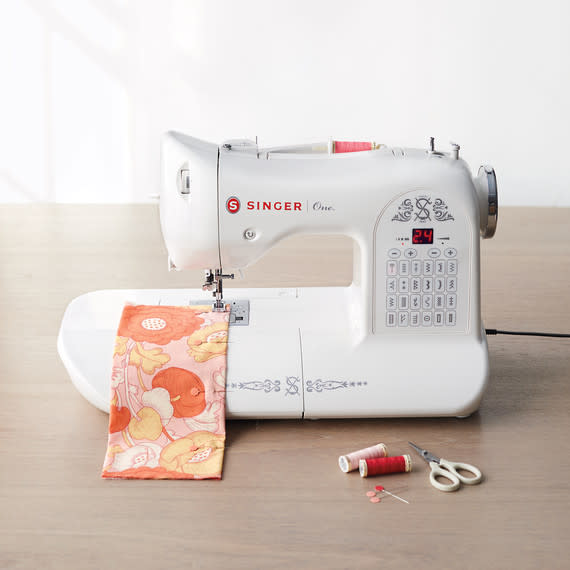3 Common Sewing Machine Problems (and How to Fix Them)

When you're learning a new skill, a mistake or two is inevitable. It's all part of the learning curve. But even a skilled seamstress can fall victim to the dreaded skipped stitch or broken needle, or what's possibly the most annoying of all sewing machine headaches: thread bunching. When you hear that agitated whir from the machine—cue the internal "ugh" of despair—consider that to be your distress signal.
The details may vary a little depending on the make and model of your sewing machine—so we suggest that you get familiar with the mechanics of your machine—but the fundamentals are the same. Whether you're a seamless pro or a novice with needles, we have the no-sweat solutions for your most frustrating issues.

The Problem: Thread is bunching under the fabric.
The Solution:
You can have a perfectly straight stitch on the top, but a "bird's nest" forming on the bottom. So why the inconsistency? People tend to think that the bobbin is to blame; in fact, this couldn't be farther from the truth. The thread is snarling -- usually, under the fabric -- because there is no tension on the upper thread. Seems counterintuitive, right?
Still, here's what to do: First, raise the presser foot lifter and rethread the machine. This opens up the tension mechanism to receive the thread. Second, you will need to raise the take-up lever and needle to the highest position according to your machine's manual. This should help to confirm you have the right tension.

The Problem: Stitches are coming out uneven or skipping entirely.
The Solution:
Odds are, the secret culprit here is a needle that is broken, bent, or otherwise damaged. Experts recommend that you replace your needles for every 16 hours of stitching time.
Another possibility is how you handle the fabric whilst sewing. If you have the tendency -- and many of us do -- of pulling the fabric from behind to make it go through the machine, the practice can result in unclean stitching and can even break your machine. This kind of force-feeding of the fabric works against the feed dogs (the metal teethlike ridges that grip the bottom of the fabric, coaxing it to move away from the needle as stitches are sewn). Work with the machine -- don't force it.
[TRY THIS: Here's What to Do if Your Sewing Machine is Skipping Stitches]

The Problem: The needle keeps breaking.
The Solution:
This boils down to a single follow-up question, "Are you using the right needle?" Going up or down to the appropriately-numbered size can make a huge difference. Needles are sized from 8 to 18, depending on their use. A size 9 or 11 works best for delicate, lightweight fabrics like chiffon, silk, and organza. A size 14 works best for medium-weight fabrics like flannel, linen, and synthetic suedes. And a size 16 (or preferably) 18 is reserved for heavy-weight fabrics like denim. Therefore, using a size 9 needle on denim will inevitably break the needle. Additionally, are you using the right type—that is, ball point, regular point or wedge point? For reference, you can check a full size chart here.
[LEARN: A Full Guide to Sewing Machine Needles]
Still having issues? This three-step checklist can easily solve most machine mishaps.
1. Clean it out: When was the last time you did a thorough top-to-bottom wipe-down of your machine? Dust and lint can quietly and quickly accumulate in the bobbin area and tension assembly, so have your machine professionally serviced regularly. If you use it daily, a weekly cleaning is needed. For weekly use only, clean it once a month. And for occasional monthly use, clean it every three months.
2. Rethread your machine: Yes, even the slightest bump can affect your stitching. Check your bobbin, needle, and thread to make sure eveything is in the right place.
3. Check your needle and thread: As we already mentioned, using the right size and type of needle is imperative. Additionally, you should use high-quality thread -- it will have a nice, smooth filament and not be "fuzzy" or uneven in thickness. Thread does have a shelf-life -- although different types age differently -- so keep your collection of spools in rotation and stored properly (out of humidity and direct sunlight).
Feeling inspired? Watch how to make a garland using your sewing machine: